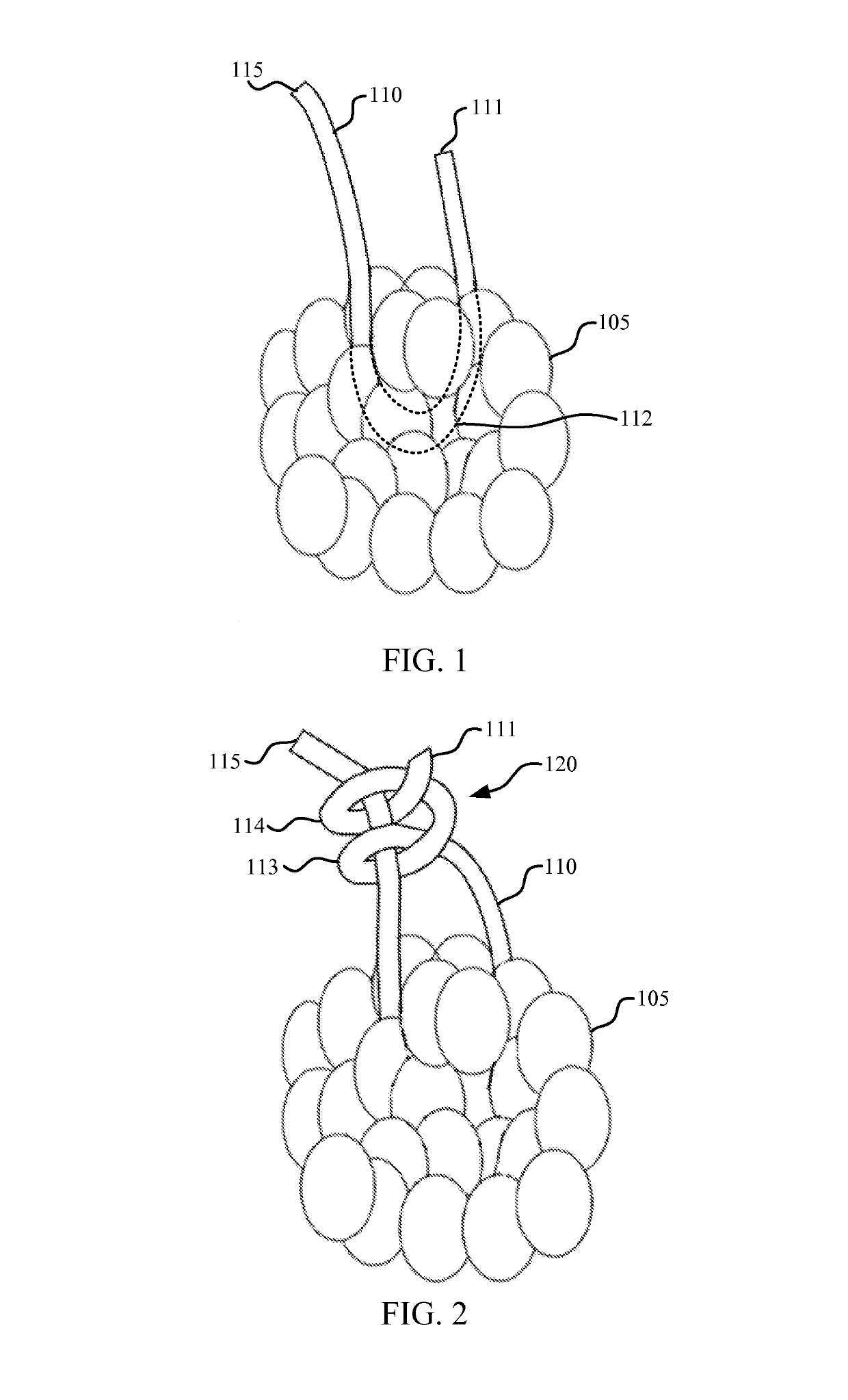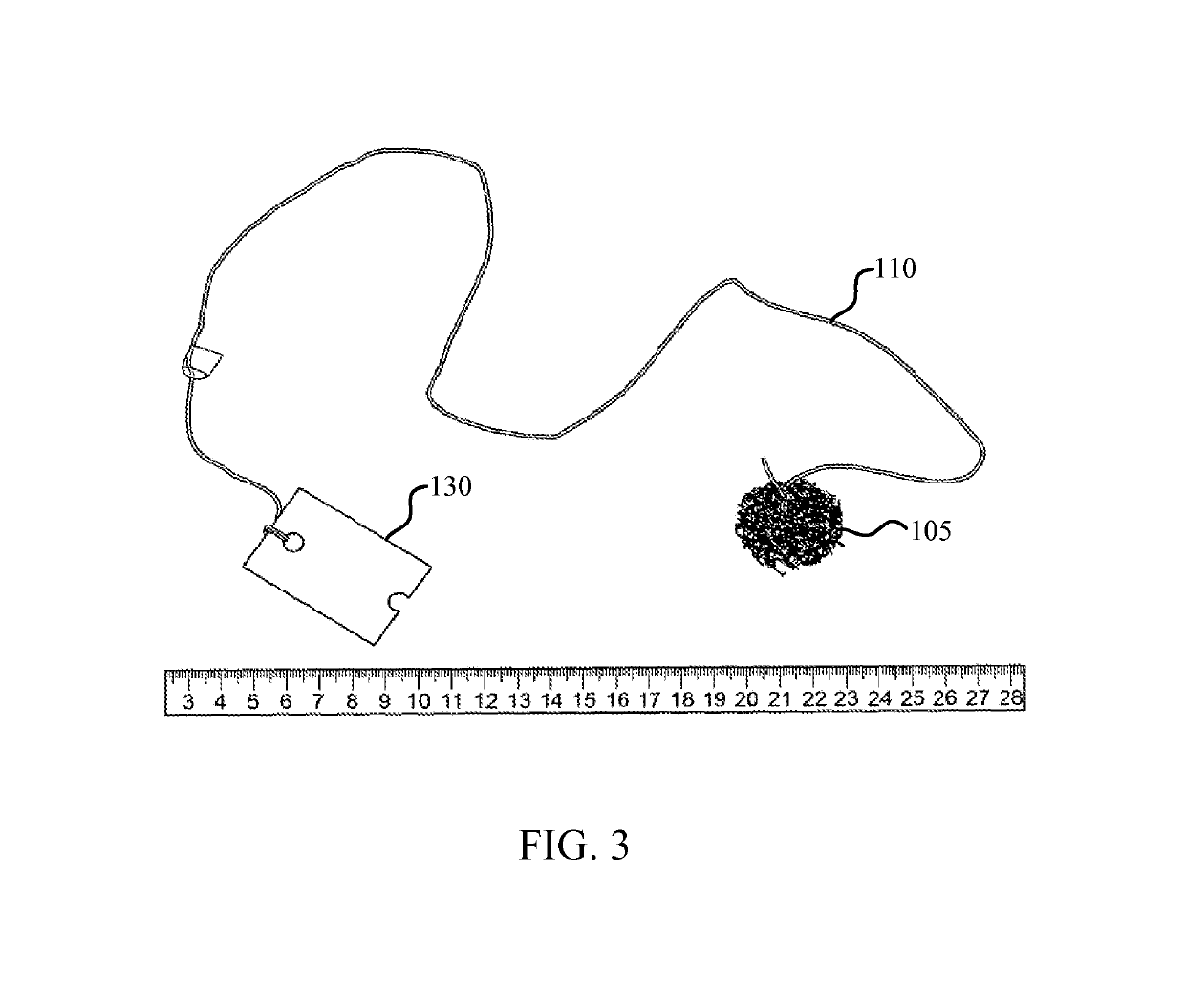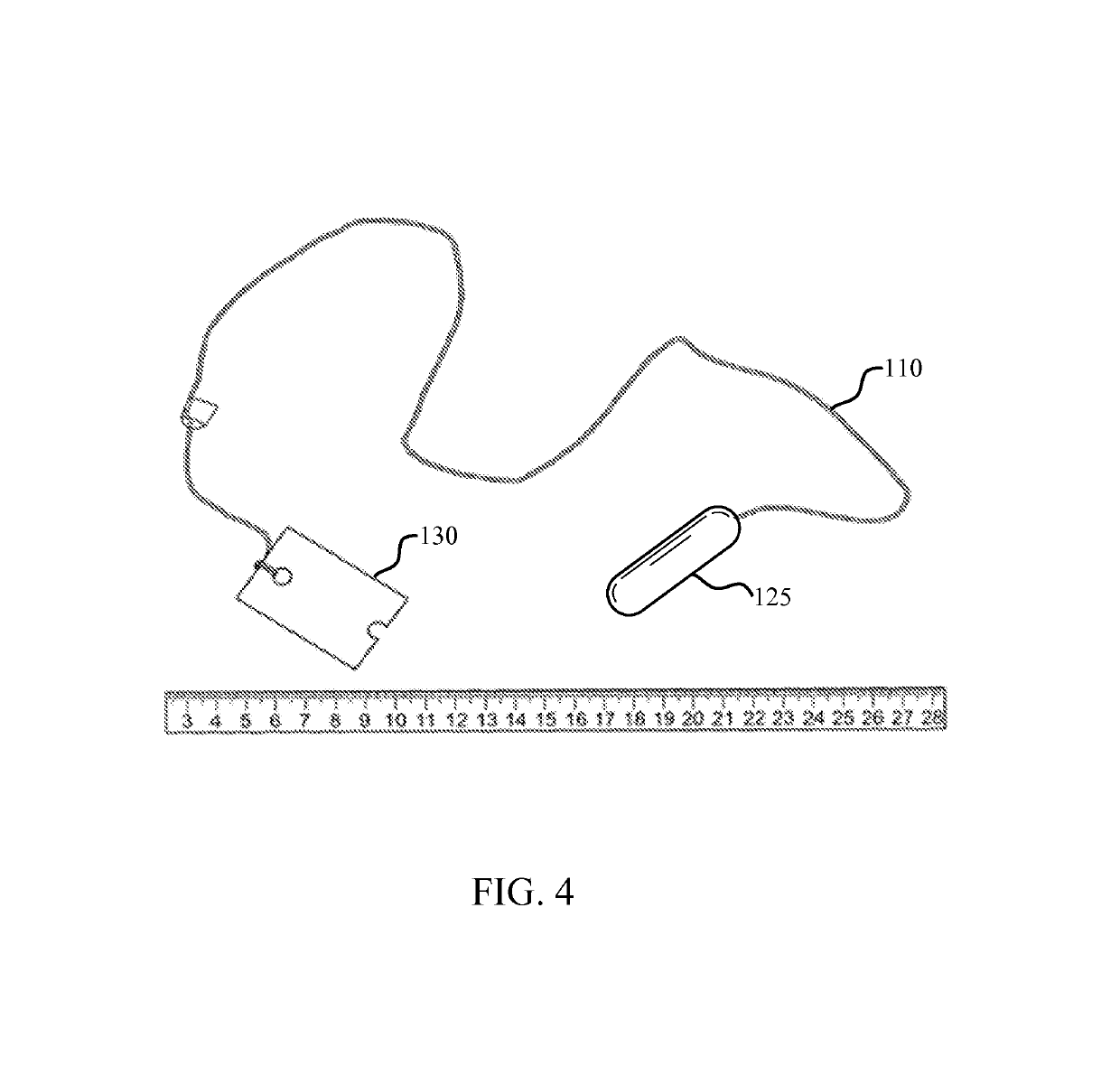Cell sampling device
a cell collection and cell technology, applied in the field of cell collection devices, can solve the problems of loss of the subject being sampled inside the device, the device is swallowable, and the cotton cord of this type can be too rough, so as to increase the likelihood of the presence of squamous cell carcinoma, and increase the likelihood of the presen
- Summary
- Abstract
- Description
- Claims
- Application Information
AI Technical Summary
Benefits of technology
Problems solved by technology
Method used
Image
Examples
example 1
Construction of Device
[0208]An exemplary device has the following features or components[0209]abrasive material: Sponge 105 (composition: reticulated polyurethane; density: 10 ppi; shape: spherical; diameter: 3 cm; supplier: Foam Conversion Ltd, Kempston, Bedforshire, UK)[0210]means for retrieval: Cord 110 (reference: White Force Fiber Code F500-W; size: No 2; supplier: Teleflex Medical, USA)[0211]soluble capsule 125 (reference: Gelatin Capsule; size: 00; supplier: Capsuline Inc., USA)[0212]unswallowable element 130: Cardboard retaining the loose end of the cord 110 (supplier: Medical Wire & Equipment Ltd, UK)
[0213]The device is optionally packaged:[0214]Packaging (composition: sealed polythene bag; supplier: Medical Wire & Equipment Ltd, UK)
[0215]The device may be irradiated with a minimum dose of 17 kGy, which is at a level necessary to clean the device but not sterilise it. The device may be optionally irradiated with a sterilizing dose of radiation.
[0216]The knot 120 used in tyi...
example 2
Further Properties and Features
[0227]Devices of the invention may be tested to check their performance and properties.
[0228]Devices may be tested as follows:[0229]measure the length of the cord from the end to the outer surface of the capsule—it should be 60 centimeters minimum[0230]look for any breaks on the outside of the capsule—any breaks should be remedied[0231]calculate the time taken for the capsule to dissolve and the sponge to open in warm water at 30 degree C.—it should be 5 minutes maximum[0232]measure the size of the loop inside the sponge[0233]check the loop—should be just below the surface of the sponge[0234]measure the free end of the cord after the knot—it should be 1 centimeter in length minimum[0235]check that the knot complies with specifications set out herein[0236]measure the diameter of the sponge once the capsule dissolved after 5 minutes—it should be 3 centimeters[0237]measure the weight the cord can hold before either tearing the sponge apart or the thread g...
example 3
Comparative Data
[0238]Devices according to the present invention were tested as above. Known (old) devices were tested in parallel to demonstrate the technical advantages of the device of the invention.
[0239]Exemplary features of a device according to the present invention include the following:[0240]Sponge:[0241]Shape—round[0242]Diameter—3cm[0243]Capsule:[0244]Uniform shape and size[0245]Not have any breaks and sharp ends[0246]Dissolves in 30 degree centigrade water within 5 minutes[0247]Retrieval means:[0248]Cord[0249]White colour thread[0250]Minimum length of cord—60 cms[0251]Smooth on the surface[0252]Loop inside the sponge—should loop just below the surface[0253]Free end of the cord after the knot—minimum of 1 cm[0254]Knot—Double hitch knot and complies with the specifications given[0255]Break resistant—Minimum requirement of 2.4 kg[0256]Cord tethered to unswallowable element such as cardboard to prevent swallowing
[0257]Test performance of the known sponge (old sponge) in vitro...
PUM
 Login to View More
Login to View More Abstract
Description
Claims
Application Information
 Login to View More
Login to View More - R&D
- Intellectual Property
- Life Sciences
- Materials
- Tech Scout
- Unparalleled Data Quality
- Higher Quality Content
- 60% Fewer Hallucinations
Browse by: Latest US Patents, China's latest patents, Technical Efficacy Thesaurus, Application Domain, Technology Topic, Popular Technical Reports.
© 2025 PatSnap. All rights reserved.Legal|Privacy policy|Modern Slavery Act Transparency Statement|Sitemap|About US| Contact US: help@patsnap.com



